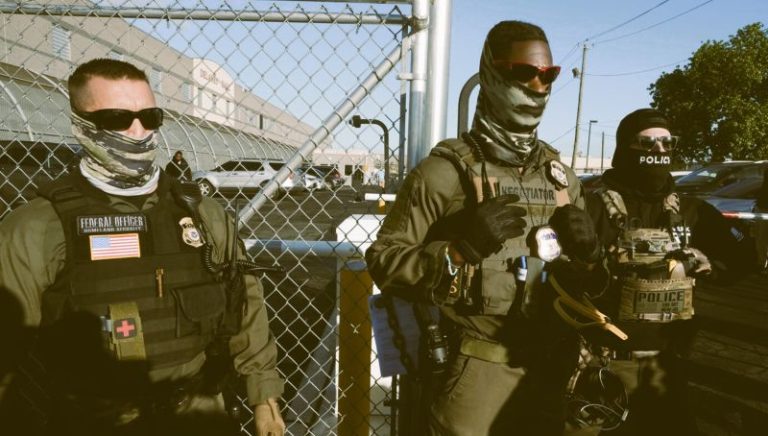

The post-truth crisis is ultimately a test of civic character. A republic cannot survive if its citizens prize affirmation over understanding or outrage over accuracy.

By Matthew A. McIntosh
Public Historian
Brewminate
Introduction
There was a time when truth anchored American democracy, not perfectly, but firmly enough to keep public life tethered to evidence. That era feels increasingly distant. In the age of the MAGA movement, facts no longer hold the gravitational pull they once did. Truth has been recast as partisan, expertise as elitism, and reality itself as negotiable. What was once a contest over policy has become a contest over the very conditions of belief.
The phrase “post-truth politics” captures this inversion. In such a climate, emotion outranks evidence, and loyalty to identity becomes a higher virtue than fidelity to fact. A leader’s claim, no matter how easily disproved, can endure simply because it satisfies a deeper emotional need, to belong, to believe, to resist perceived enemies. The MAGA movement exemplifies this shift, not because it invented it, but because it mastered its machinery: narrative over data, grievance over governance, spectacle over substance.
This transformation has not occurred in isolation. The digital age has supplied the perfect infrastructure for post-truth politics, a sprawling ecosystem of echo chambers, algorithmic curation, and viral storytelling that rewards outrage more than accuracy. Within that environment, MAGA became less a political movement than a shared mythology, one sustained by repetition and ritual rather than evidence or accountability.
The danger is not only that facts are ignored, but that they are replaced, redefined by those who wield emotional authority. When evidence collides with identity, identity often wins. And when entire communities begin to live within those identity-based realities, institutions built on shared verification (courts, elections, journalism) start to lose legitimacy. What follows is not merely misinformation, but disorientation: a public sphere in which persuasion no longer requires proof, only conviction.
This is the crisis of belief at the heart of post-truth America. It is not a temporary fever but a reordering of how truth itself functions in political life. The question that now confronts the nation is stark: can a democracy survive when its citizens no longer agree on what is real?
The Shifting Terrain of Truth
The phrase “post-truth” first entered the political lexicon with the Oxford English Dictionary’s 2016 designation of it as Word of the Year, defined as circumstances in which objective facts are less influential in shaping public opinion than appeals to emotion and personal belief. This concept crystallized during the rise of Donald Trump, whose communication style fused emotional authenticity with deliberate factual distortion. In rallies and social media posts, exaggeration and falsehood became instruments of belonging rather than barriers to credibility. The measure of truth was no longer correspondence to reality but resonance with feeling.
Research from institutions such as the RAND Corporation and the Pew Research Center confirms that this trend is not confined to one side of the political spectrum, but it has found its most potent expression in the MAGA movement. Within that movement, “truth” is often defined relationally, against enemies, elites, or the “mainstream media.” This dynamic allows misinformation to flourish because it becomes less about what is empirically verifiable and more about what affirms group identity. When falsehood becomes a badge of solidarity, correction feels like betrayal.
Digital media has amplified this shift. Algorithms that reward engagement (likes, shares, and emotional intensity) have effectively transformed anger into currency. Studies by the Massachusetts Institute of Technology have shown that false information spreads faster and farther than factual reporting on platforms such as X (formerly Twitter) and Facebook. The architecture of attention itself has become post-truth, privileging speed, simplicity, and outrage over nuance and verification. The political consequence is a populace that no longer consumes information to learn but to belong.
The erosion of factual consensus, however, is not simply a media problem. It reflects a broader cultural redefinition of what truth means. For much of the twentieth century, Americans shared a baseline of institutional trust (in science, journalism, the judiciary, and education) even amid political divides. In the MAGA era, that baseline has collapsed. Truth is no longer a common space but a contested one, shaped by emotional narrative rather than empirical evidence. This is not just epistemological drift; it is a civic unraveling.
The loss of that shared foundation marks a profound transformation in American life. When facts lose their gravity, politics ceases to be a forum for debate and becomes a theater of belief. What once anchored public discourse now floats freely, pulled not by reason but by feeling and by those most adept at manipulating it.
MAGA as Identity, Narrative, and Status Reclamation
To understand the durability of the MAGA movement, one must see it not primarily as a political ideology but as an identity structure, a story people tell about who they are and what was taken from them. It offers a sense of belonging to those who feel displaced by globalization, cultural diversification, and the decline of traditional hierarchies. The red hat, the chants, the rallies, these are not merely political symbols but ritual affirmations of self and tribe. Within that framework, belief becomes performative. To “believe” in something is not to verify it, but to declare allegiance to a collective sense of grievance and renewal.
At its core, MAGA is a narrative of reclamation. Its slogan, “Make America Great Again,” is less a policy proposal than a mythic return. The “again” implies a moral arc reversed, a past purity lost to corruption. That nostalgia has always been a powerful tool in politics, but here it has been weaponized into a form of collective memory engineered to exclude. The idealized past it invokes was never universal; it was selective, racialized, and hierarchical. Yet, emotionally, it resonates because it promises restoration rather than reform, a return to a world where one’s identity felt central, not peripheral.
In this sense, the movement’s emotional storytelling operates as a substitute for factual coherence. Stories of persecution, “deep state” conspiracies, and media betrayal serve to unify followers through shared outrage. Once internalized, these stories function as emotional truth, immune to contradiction. When external facts challenge them, believers often double down, not because they are ignorant, but because the myth offers something reality cannot: meaning. The factual falsity of a claim becomes irrelevant compared to its symbolic power.
Sociologists observing MAGA rallies have noted how participants describe a sense of spiritual awakening rather than political engagement. The events resemble revival meetings, complete with ritualized chants, testimonies, and emotional catharsis. The leader’s words, however inconsistent, are received not as information but as affirmation. This is why debunking rarely works. The purpose of the narrative is not to explain the world but to sanctify the community that believes it.
In that light, the MAGA phenomenon exposes a deeper cultural fracture: the collapse of a shared civic identity into competing emotional tribes. Truth has become an instrument of belonging rather than an arbiter of debate. The more politics becomes a contest of narratives, the less room remains for persuasion, because persuasion presupposes a common reality, and that, increasingly, no longer exists.
Disinformation, Strategic Ambiguity, and the Undermining of Evidence
The post-truth ecosystem that sustains the MAGA movement is not merely the result of confusion or media illiteracy, it is the outcome of deliberate strategy. Disinformation in this context is not simply falsehood; it is the systematic erosion of the very idea that truth can be known. By flooding the public sphere with contradictory claims, conspiratorial narratives, and constant attacks on legitimate sources, political operatives have created an environment where disbelief itself becomes a weapon. The point is not to make people believe one lie but to make them doubt that any truth exists at all.
This “strategic ambiguity” was evident in the aftermath of the 2020 presidential election. Courts, state officials, and bipartisan election monitors repeatedly verified the integrity of the results, yet the “Stop the Steal” narrative persisted. Its power lay not in its plausibility but in its emotional charge. Each repetition of the lie, amplified across social media and partisan outlets, deepened the perception of a conspiracy too vast to disprove. Fact-checking could not compete with the psychological comfort of belonging to a cause that framed disbelief as courage and skepticism as faith.
The social media infrastructure magnified this dynamic. Platforms like Facebook and X rewarded emotional intensity with visibility, ensuring that anger and fear spread faster than correction or context. Studies from the Massachusetts Institute of Technology and the Pew Research Center have shown that misinformation on these networks thrives precisely because it appeals to moral outrage, the emotional accelerant of the digital age. Once viral, falsehoods are rarely reversed; the retraction reaches only a fraction of those who saw the lie. The emotional imprint lingers, reshaping memory and perception long after the facts are known.
Compounding the problem is a media landscape increasingly divided between information silos. Conservative news networks, talk radio, and alternative platforms have formed a closed informational circuit in which partisan narratives are reinforced through repetition. In this echo chamber, distrust of mainstream journalism is not a side effect, it is the organizing principle. When every external source is presumed corrupt, believers rely solely on internal ones, creating a self-sealing world immune to external verification. The epistemic walls are reinforced daily through repetition and community policing of dissent.
This environment has not only reshaped what people believe but how they believe. Truth is now something one “feels” rather than confirms. The moral weight of emotion substitutes for the intellectual rigor of evidence. In the MAGA era, declarations like “I know it in my heart” carry more authority than data or documentation. Political leaders exploit this shift by crafting messages that invite emotional validation rather than critical engagement. The success of a statement is measured not by accuracy but by how intensely it resonates with the audience’s preexisting sentiments.
The result is a civic sphere increasingly detached from empirical reality. When emotion becomes the measure of truth, manipulation becomes indistinguishable from persuasion. Disinformation is not just an external threat to democracy; it becomes the language through which political belonging is defined. Facts can still be spoken, but they fall weightless, stripped of gravity by the stronger pull of belief.
Consequences for American Institutions and Belief
When belief is decoupled from evidence, democratic institutions begin to lose their legitimacy. The MAGA era has revealed this fragility with unsettling clarity. Election officials who upheld certified results have been harassed or driven from office. Journalists documenting corruption have been branded enemies of the people. Courts that ruled against partisan interests have been accused of betrayal rather than praised for independence. These attacks are not isolated incidents; they represent a sustained campaign to erode trust in the mechanisms that hold power accountable. Once faith in those institutions collapses, democracy itself becomes negotiable, replaced by loyalty to personalities rather than principles.
The corrosion of factual consensus extends far beyond politics. Science, medicine, and education, long-standing anchors of shared knowledge, have all been drawn into the gravitational field of identity politics. Public health measures during the COVID-19 pandemic became litmus tests of political allegiance. Climate science, once a matter of empirical consensus, is now treated by segments of the population as ideological propaganda. In each case, the pattern is the same: emotion overrides expertise, and tribal identity replaces collective reasoning. When citizens no longer distinguish between truth and tribalism, society loses its ability to deliberate, to plan, and to learn.
This collapse of belief has profound cultural consequences. The notion of a “common good” depends on a shared sense of what is real. Without that, the public square becomes a battlefield of competing realities, each one self-contained, self-righteous, and self-reinforcing. The philosopher Hannah Arendt once warned that totalitarianism begins not with lies but with the destruction of a shared world where truth can be tested. The United States has not reached that point, but the warning is newly relevant. A democracy built on skepticism must still believe in something larger than itself: the possibility of truth.
The crisis of belief now confronting America is not one that can be legislated away. It requires cultural reconstruction, the rebuilding of trust, transparency, and civic humility. Institutions must reclaim credibility through integrity and openness, while citizens must relearn the discipline of discernment. Truth, in this sense, is not a given but a practice, one that demands patience, empathy, and courage in equal measure. The alternative is a nation where every fact is a weapon, every disagreement a rupture, and every election a test not of evidence but of faith.
What Might Reverse or Slow the Trend
Rebuilding the gravitational pull of truth in American life requires more than fact-checking or policy reform; it demands cultural repair. The MAGA era has exposed how deeply people crave stories that affirm dignity and belonging. Countering disinformation, then, cannot rely on technocratic precision alone; it must offer emotional truth as well as empirical fact. Civic renewal begins not by shaming people for believing falsehoods, but by reimagining a public narrative in which truth feels like home again, not a weapon, not a lecture, but a shared foundation for meaning.
Media reform is part of this restoration. Transparency in algorithms, stronger accountability for disinformation campaigns, and the amplification of local journalism all matter. Yet the larger work is educational: teaching critical thinking, media literacy, and civic reasoning from early childhood onward. When citizens understand how information is shaped and shared, manipulation loses much of its power. Schools and universities can help revive the civic habits that allow disagreement without disbelief, to argue fiercely, yet still agree on what is real.
At the same time, institutions must confront their own complicity in the erosion of trust. The media’s pursuit of “both sides” equivalence, political leaders’ indulgence of convenient falsehoods, and the corporate monetization of outrage have all fed this crisis. Restoring legitimacy requires moral consistency: a willingness to tell hard truths even when they cost power, profit, or popularity. When institutions model integrity, they create conditions in which truth can regain its weight, slowly, but perceptibly.
Ultimately, the challenge is moral as much as intellectual. Democracy cannot survive in a vacuum of belief; it requires faith in the possibility of truth, even when truth is inconvenient. The MAGA movement did not invent post-truth politics, but it revealed its full potential, a politics of emotion untethered from evidence. Reversing that trajectory begins with reasserting a simple but radical conviction: that facts still matter, that honesty is still strength, and that the gravity of truth, once lost, can be recovered only when we choose to believe in its pull again.
Conclusion
The MAGA era has not merely distorted political discourse; it has redefined the nature of truth itself. In this new order, evidence is subordinate to emotion, and loyalty outweighs logic. Facts no longer persuade; they polarize. This shift has transformed politics into a theater of belonging, where identity validates reality and doubt becomes heresy. Once truth is treated as partisan property rather than public trust, the civic fabric begins to fray. What collapses first is not policy consensus but the very possibility of shared meaning — the belief that facts can still hold us together.
Yet history offers reminders that democracies have weathered crises of truth before. From the propaganda wars of the early twentieth century to the red scares of the Cold War, America has repeatedly tested the limits of its own credulity. Each recovery began not with silence or cynicism, but with courage, the refusal to surrender language, evidence, or empathy to those who profit from confusion. The restoration of truth begins when individuals, educators, journalists, and leaders resist the lure of emotional certainty and return to the harder work of verification.
The post-truth crisis is ultimately a test of civic character. A republic cannot survive if its citizens prize affirmation over understanding or outrage over accuracy. The choice is not between faith and fact but between the democracy that truth makes possible and the tyranny that its loss invites. To recover gravity in public life, Americans must relearn what it means to believe responsibly, to hold conviction and evidence in the same hand. Only then can the center of democratic truth, however strained, begin to hold again.
Originally published by Brewminate, 10.30.2025, under the terms of a Creative Commons Attribution-NonCommercial-NoDerivatives 4.0 International license.


